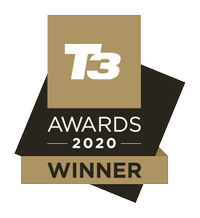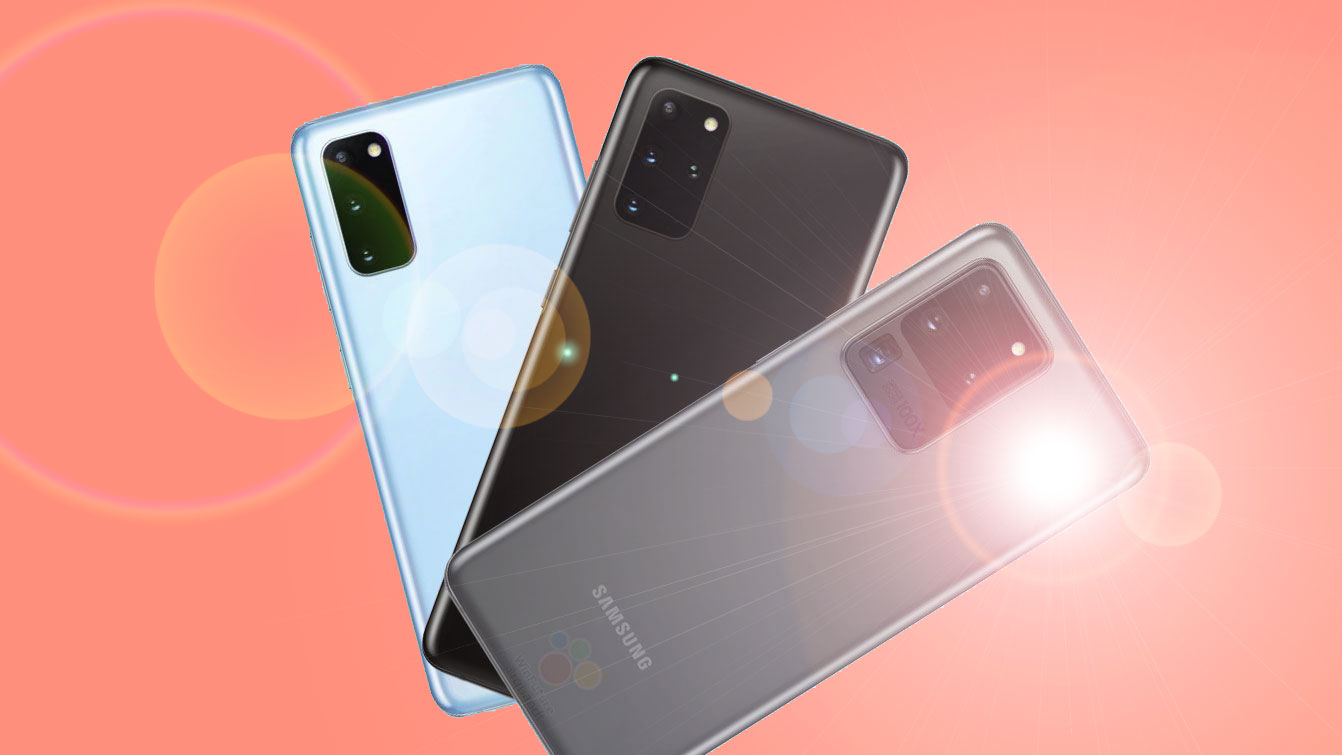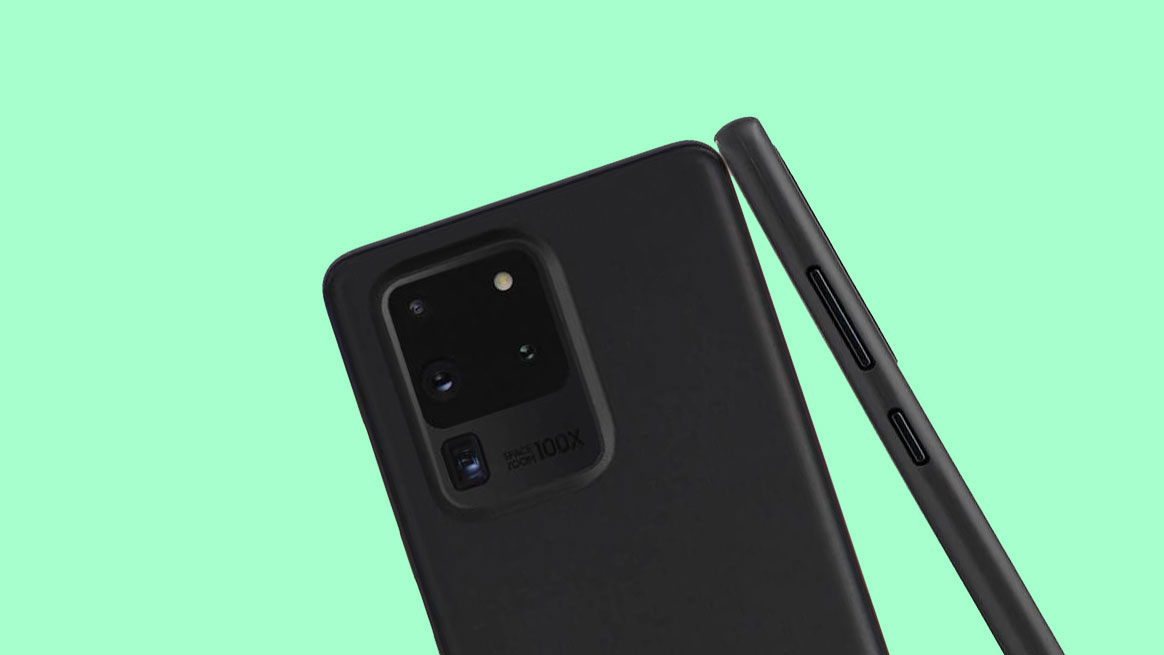

Samsung revealed its upcoming flagship smartphone, the Galaxy S20 series, at Unpacked last week and while the line of handsets are available to pre-order, they won't be officially available until March 6.
Now that it's been unveiled in all of its glory, the specs of the Galaxy S20, S20+ and S20 Ultra have been confirmed and both Samsung fans and prospective customers alike were thrilled at the news that all three models would boast a 120Hz refresh rate. But it turned out that there was a catch to using it – it was only available on the lower of the two screen resolutions on offer on the Samsung S20. But never mind: Samsung is reportedly fixing this in time for the smartphone family's launch.
That's via often correct, serial Twitter leaker Ice Universe. He suggests you'll be able to enjoy the maximum refresh rate at the highest resolution. And he has pictures to prove it!
- Best Samsung Galaxy S20 deal of the day includes first 6 months HALF PRICE!
- Samsung Galaxy S20 vs Samsung Galaxy S20 Plus vs Samsung Galaxy S20 Ultra
This is one of the firmware versions of the Galaxy S20 series. We see that not only the WQHD + 120Hz mode can be selected, but also the dynamic mode, which is a very mature solution.better than limited to FHDlet's expect Samsung to implement such a solution as soon as possible. pic.twitter.com/mLtFUwH0WZFebruary 18, 2020
The shared screenshot shows an option to 'always use 120Hz' although this setting alone doesn't necessarily indicate that it'll always maintain that when the resolution is bumped up. As users in the thread below point out, people are going to want the option to take advantage of that 120Hz even if it means draining their battery faster.
We can also see a Dynamic mode that will flit between 60Hz and 120Hz on the fly to achieve 'the best balance between display quality and battery life'. At the moment, we don't know what circumstances will cause that to kick in, but according to Sammobile, it'll be triggered when particular apps launch (like camera and Google Maps), as well as when the battery temperature exceeds 42 degrees, or if the battery level drops to below 5%.
The default settings for Samsung's S20 series is QHD+ (3200x1800) at 30Hz, but as it currently stands, the 120Hz refresh rate can only be used with the FHD+ (1440x2160) resolution. If you want to tweak your display, opting for QHD+, the devices will automatically reduce the refresh rate down to 60Hz, in order to preserve the battery.
Apple's flagship iPhone 11, iPhone 11 Pro, and iPhone 11 Max all run at a locked 60Hz, and while the refresh rate isn't impressive as such, it's consistent. It's also less of a drain on the battery. The iPhone 11 also lags behind in the resolution department, with a sub-1080p display (1792x828 to be precise).
Sign up to the T3 newsletter for smarter living straight to your inbox
Get all the latest news, reviews, deals and buying guides on gorgeous tech, home and active products from the T3 experts
A better comparison might be Google's Pixel 4 which dipped to a sub-90Hz refresh rate when the screen brightness fell below 75%, although you can choose to force the 90Hz refresh rate in the settings.
While 90Hz and 120Hz are great for mobile gamers, making for a smoother experience overall, the phones that utilise them are usually more expensive, and will either have a larger battery, making for an unwieldy form factor, or be at risk of shorter battery life, as is the case with Pixel 4. Usually, a manufacturer will mitigate this by having the refresh rate drop if particular parameters are met, to conserve power.
The Galaxy S10 was Samsung's last flagship phone, and it's recently had a significant price drop following the reveal of the S20. Check out the differences between the Galaxy S10 and Galaxy S20 right here.
- Compare the best iPhone 11 deals
- Compare Samsung S20 deals
Source: TechRadar
Shabana worked at T3.com as News Editor covering tech and gaming, and has been writing about video games for almost a decade (and playing them since forever). She's had bylines at major gaming sites during her freelance career before settling down here at T3, and has podcasts, streaming, and video content under her belt to boot. Outside of work, she also plays video games and should really think about expanding her hobbies. If you have any tech or gaming tips, shoot over an email or DM her on social media.
-
 A new age of humanity wins the Sony World Photography Awards 2025
A new age of humanity wins the Sony World Photography Awards 2025Zed Nelson's Anthropocene Illusion highlights the influence of humans on the environment and the artificial spaces left for wildlife in a powerful set of images to win this year's SWPA Photographer of the Year
By Mat Gallagher
-
 How to watch Mario Kart World Direct – everything you need to know about the Switch 2 launch game
How to watch Mario Kart World Direct – everything you need to know about the Switch 2 launch gameNintendo will host a new Nintendo Direct presentation this week, here's how to watch it live and what to expect
By Rik Henderson
-

 Samsung Galaxy S20 review: A true Android powerhouse
Samsung Galaxy S20 review: A true Android powerhouseIt may be getting on a bit, but the Samsung Galaxy S20 is still a cracking phone
By Matt Evans
-
 Samsung Galaxy S20 vs Samsung Galaxy S20 Plus vs Samsung Galaxy S20 Ultra
Samsung Galaxy S20 vs Samsung Galaxy S20 Plus vs Samsung Galaxy S20 UltraWhich is the best Samsung Galaxy S20 model out of the three?
By David Nield
-
 Samsung Galaxy S10 vs Samsung Galaxy S20: what's changed with Samsung's 2020 flagship smartphones?
Samsung Galaxy S10 vs Samsung Galaxy S20: what's changed with Samsung's 2020 flagship smartphones?How the Samsung Galaxy S20 specs stack up
By David Nield
-
 Samsung Galaxy S20 camera shows off incredible night mode detail
Samsung Galaxy S20 camera shows off incredible night mode detailSee the Samsung Galaxy S20's night mode and 30x zoom features ahead of today's official launch
By Matt Evans
-
 Samsung Galaxy S20 prices revealed ahead of launch date
Samsung Galaxy S20 prices revealed ahead of launch dateWe hope you've been saving – expect to pay big money for an S20 Ultra 5G
By Matt Evans
-
 Samsung Galaxy S20 Plus and S20 Ultra revealed in first live images
Samsung Galaxy S20 Plus and S20 Ultra revealed in first live imagesReal photos of the two premium Samsung Galaxy S20s have emerged on Twitter
By Matt Evans
-
 Samsung Galaxy S20 official marketing images leaked
Samsung Galaxy S20 official marketing images leakedFour new colourways and all three camera setups are shown off in these Samsung Galaxy S20 images
By Matt Evans
-
 Samsung Galaxy S20 images released revealing camera designs
Samsung Galaxy S20 images released revealing camera designsFinally! A set of cases for the Samsung Galaxy S20 range unveil all three models early
By Matt Evans